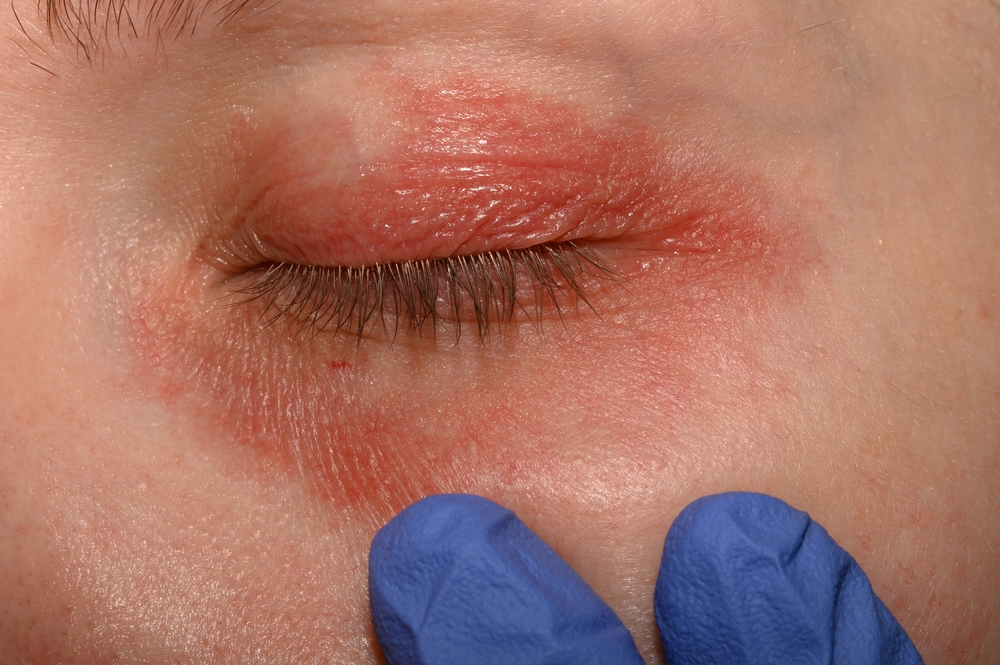
eyelid psoriasis differences
Introduction
Psoriasis can show up almost anywhere on your body, but when it affects your eyelids, it behaves in ways that are not always familiar. The skin around your eyes is thinner, more delicate, and constantly in motion, which makes flare-ups here unlike patches you might see on your scalp or elbows. These unique eyelid psoriasis differences are important to understand because they influence both symptoms and treatment.
While psoriasis in other areas often creates thicker, more visible plaques, eyelid involvement may bring subtler changes that still interfere with daily comfort. Swelling, redness, and irritation close to the eyes can quickly affect how you see and feel.
In this blog, we’ll explore how eyelid psoriasis differs from other types, the signs to look for, and practical ways to manage it safely.
Why Eyelid Psoriasis Feels Different
When psoriasis affects your eyelids, it is not only a skin condition; it also impacts your daily life. The skin in this area is among the thinnest on your body, so redness and swelling appear faster. Unlike other areas, even a small flare can cause noticeable discomfort.
Moreover, blinking adds constant movement, which irritates the skin further. This is not something you usually experience when psoriasis affects the scalp or elbows. On top of that, the skin around your eyes has oil glands and fine folds that respond differently to inflammation.
Here’s the thing: eyelid psoriasis often feels more sensitive because of:
- The thin structure of eyelid skin
- Continuous movement when you blink
- Close contact with the eyes can affect vision if untreated
You might notice itching or a burning sensation that doesn’t happen in other locations. This sensitivity also means you need tailored care, since strong creams can damage your eyes if applied too close.
Common Symptoms of Eyelid Psoriasis
At first, eyelid psoriasis may look like eczema, allergies, or even an eye infection. This is why recognizing the specific symptoms matters.
The most common signs include redness, scaling, and flaking along the lash line. Sometimes, your eyelid edges thicken, which can make it harder to open or close your eyes fully. Unlike psoriasis patches on other parts of the body, these scales are very fine and can shed into your eyes, leading to irritation.
In addition, you might experience:
- Crusting near the eyelashes
- A tight, stretched feeling when you blink
- Small cracks in the corners of your eyes
- Increased sensitivity to light
Not only that, but the condition can also cause your eyelids to turn inward or outward over time. This structural change may scratch your cornea, creating further discomfort.
Compared to psoriasis on your knees or scalp, eyelid involvement often demands more caution. You cannot simply apply a strong ointment without risking eye damage. For this reason, many people with eyelid psoriasis face more frequent visits to dermatologists or ophthalmologists.
If you’ve noticed flaky patches that keep returning despite regular creams, it may not be a simple rash. It may be psoriasis that requires specific management.
Eyelid Psoriasis vs Other Psoriasis Types
Now let’s compare eyelid psoriasis to more common types. Plaque psoriasis, which you usually see on the elbows, knees, or back, produces thick, raised patches. These areas have tougher skin, so they can handle stronger treatment like corticosteroid creams. Eyelids cannot.
Scalp psoriasis often comes with silvery scales that flake onto your shoulders. It can itch intensely, but it rarely affects your vision. In contrast, eyelid psoriasis can cause swelling that interferes with seeing clearly.
Inverse psoriasis shows up in skin folds, like under the breasts or around the groin. It tends to be shiny and red rather than scaly. While it’s uncomfortable, it does not risk scratching the surface of your eye like eyelid psoriasis can.
Here’s a simple breakdown:
- Plaque psoriasis: Thick, raised plaques on tough skin
- Scalp psoriasis: Flaky, itchy scales on the scalp
- Inverse psoriasis: Smooth red patches in skin folds
- Eyelid psoriasis: Thin, irritated skin around the eyes, with risk to vision
The main difference lies in sensitivity and location. Because the eyes are so vital, eyelid psoriasis requires gentler, carefully monitored treatment. You cannot treat it the same way you treat patches on the arms or legs.
When you know these differences, you’re better prepared to seek appropriate care and avoid unnecessary risks.
How Doctors Diagnose Eyelid Psoriasis
Since eyelid psoriasis looks similar to other conditions, doctors often need careful observation to make the right call. A dermatologist may check your full skin history because psoriasis in other areas supports the diagnosis.
Moreover, they may use a slit lamp, a tool that magnifies the eye, to see if flakes or redness extend to your cornea. In some cases, a biopsy may be taken, though this is rare near the eyes.
Doctors also compare eyelid symptoms with those of seborrheic dermatitis or allergic reactions. Both of these conditions look alike, but psoriasis usually creates more defined edges and chronic flares.
If you already have psoriasis elsewhere, mentioning this to your doctor helps. It allows them to connect your eyelid symptoms with the bigger picture. Diagnosis matters because the wrong treatment, like certain allergy drops, may not bring relief and could even worsen irritation.
Treatment Options and Care Tips
Once diagnosed, treatment must balance effectiveness with safety. Strong creams are often avoided near the eyes, so doctors may suggest mild topical steroids or non-steroidal ointments.
Moreover, calcineurin inhibitors, like tacrolimus ointment, are often used since they reduce inflammation without thinning the skin. Artificial tears may be recommended if flakes fall into the eyes.
Here are practical care tips you can use:
- Apply prescribed creams carefully, using only a thin layer
- Avoid rubbing your eyes, as it worsens irritation
- Use gentle cleansers instead of harsh soaps
- Wear sunglasses outdoors to reduce light sensitivity
- Keep your hands clean before touching your eyelids
In addition, lifestyle choices play a big role. Stress often triggers flares, so relaxation practices such as deep breathing or yoga may help. Sleep and diet also influence inflammation, so a balanced routine supports healthier skin overall.
On the other hand, do not self-medicate with over-the-counter creams made for body psoriasis. These may be too strong for the delicate eyelid area. Instead, always consult your doctor about safe options.
Eyelid psoriasis may not disappear fully, but with the right care, you can reduce flare-ups and protect your vision.
Living with Eyelid Psoriasis: Practical Challenges
Living with this condition is more than a medical issue; it’s an everyday challenge. Makeup, for example, becomes tricky. Many people find mascara or eyeliner irritates the skin, yet skipping it may affect confidence.
Moreover, flare-ups can come at inconvenient times, such as before meetings or social events. Unlike psoriasis hidden under clothing, eyelid patches are visible, which may make you feel self-conscious.
Practical challenges include:
- Difficulty applying makeup without irritation
- Redness that draws attention in public
- Frequent need for soothing eye drops
- Sensitivity to sunlight or screen glare
You’re not alone in this. Many people find eyelid psoriasis changes the way they manage their daily routines. Adjusting small habits, like using hypoallergenic products and taking screen breaks, often makes a difference.
By acknowledging these challenges, you give yourself room to adapt rather than ignore them. Living with eyelid psoriasis requires patience, but it also builds awareness about how sensitive your eyes truly are.
Conclusion
Eyelid psoriasis stands apart from other forms because of its sensitive location, unique symptoms, and potential effect on vision. Unlike thicker skin areas, eyelids demand gentler treatment and constant care. By understanding these differences, you can recognize symptoms faster, avoid harmful treatments, and protect your eyes more effectively.
If you are struggling with eyelid irritation that does not go away, consulting a dermatologist is the safest step. Professionals can guide you toward tailored options and rule out similar conditions.
Through ongoing psoriasis clinical trial research, new therapies are also being tested to provide safer and more effective solutions for delicate areas like the eyelids.
Take the time today to learn, ask questions, and seek support. The right care not only manages symptoms but also helps you feel more confident in daily life.



